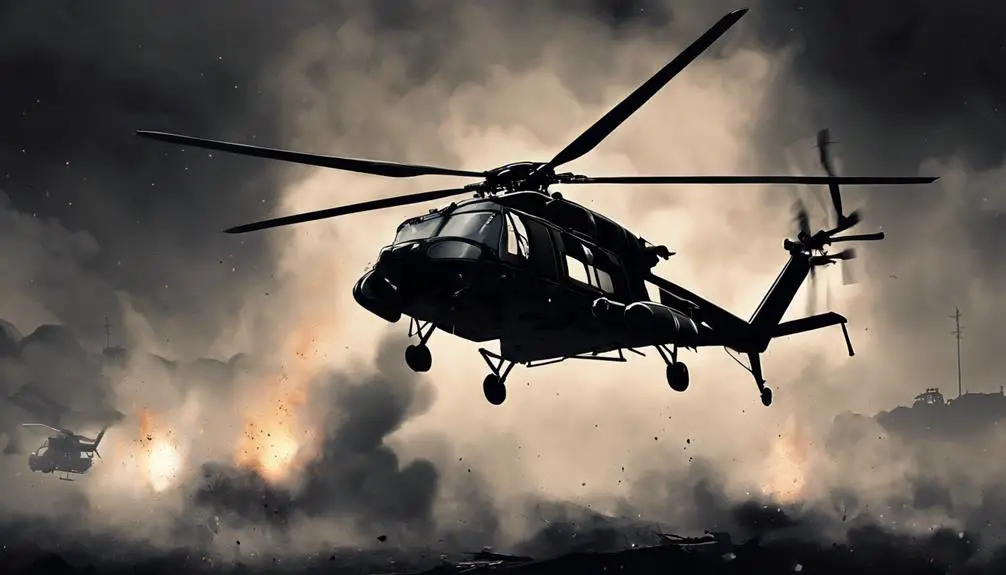You're about to explore the origins and significance of 'chopper' in military slang, a term born out of necessity in the early 1950s to describe the essential role of helicopters in combat zones. In the heat of battle, choppers play an indispensable role in airlifting troops and supplies, providing close air support, and evacuating the wounded. From the UH-60 Black Hawk to the AH-64 Apache, each helicopter type is designed for specific missions. As you dig deeper, you'll discover the skills and precision required of chopper pilots, the importance of crew communication, and how this term has become an iconic representation of rescue and heroism in popular culture.
Origins of the Term "Chopper"
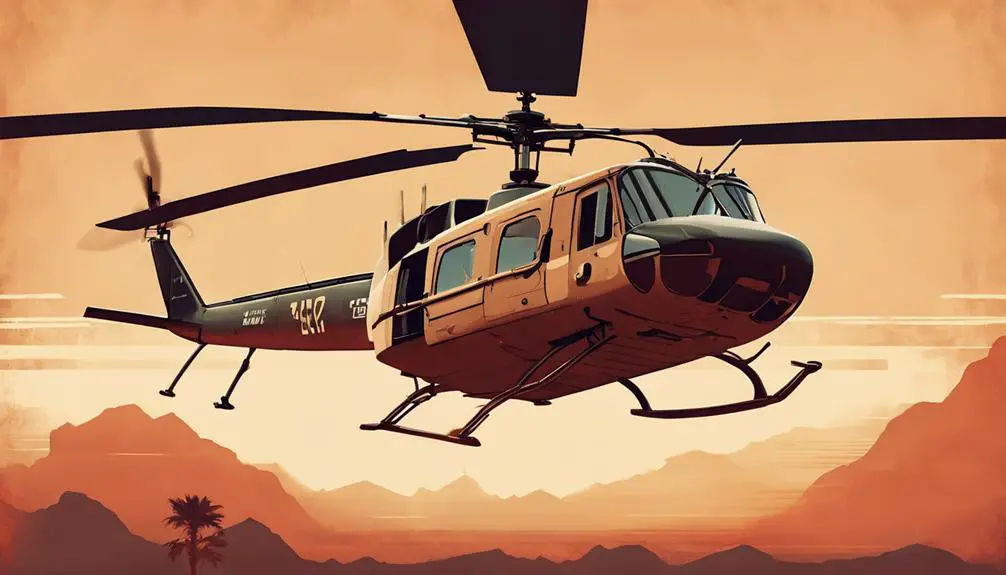
The term 'chopper' originated in the early 1950s, when the first helicopters were introduced to military service, and soldiers began using the colloquialism to refer to these new machines.
You might be curious about how this term evolved and stuck. The linguistic evolution of 'chopper' is rooted in the historical context of that time.
As helicopters became more common in military operations, soldiers needed a quick and easy way to refer to them. 'Chopper' emerged as a colloquialism, likely due to the chopping motion of the helicopter blades.
This informal term was born out of military necessity and has since become an integral part of military slang.
The historical roots of 'chopper' are closely tied to the introduction of helicopters in military service. As you explore the world of military slang, it's essential to understand the origins of this term and how it has become an enduring part of military culture.
Choppers in Combat Zones
In combat zones, you're likely to find choppers playing a crucial role in airlifting troops, supplies, and equipment, as well as providing close air support and medical evacuation. Choppers are essential for inserting troops into combat zones, extracting them from hot zones, and providing medical evacuation. In these high-pressure situations, choppers provide critical support to ground troops.
| Mission Type | Chopper Role |
|---|---|
| Combat Insertions | Inserting troops into combat zones |
| Hot LZs | Extracting troops from hostile areas |
| Medical Evacuation | Transporting wounded personnel to medical facilities |
Choppers are often the first and last point of contact for troops in combat zones. They provide the necessary transportation, firepower, and medical support to guarantee mission success. In hot zones, choppers are often the only means of evacuation, making them an essential asset in combat operations.
Military Helicopter Types
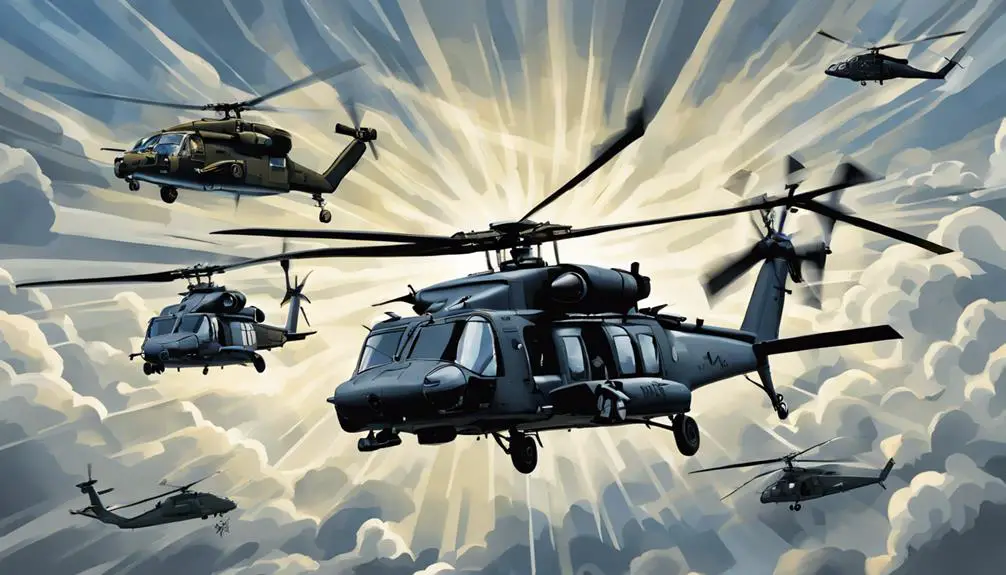
You'll encounter several types of military helicopters, each designed for specific tasks and environments, ranging from heavy-lift cargo transport to stealthy special operations. These helicopters have undergone significant transformations through the Rotorcraft Evolution, resulting in diverse Helicopter Variants.
The UH-60 Black Hawk, for instance, is a utility helicopter used for transport, medical evacuation, and combat support. The AH-64 Apache, on the other hand, is a highly maneuverable attack helicopter, equipped with advanced sensors and weapons.
Transport helicopters, such as the CH-47 Chinook, are designed for heavy-lift cargo transport, while reconnaissance helicopters like the OH-58 Kiowa provide real-time battlefield intelligence. Special operations helicopters, like the MH-60 Black Hawk, are modified for stealthy insertion and extraction of special forces.
You'll also find dedicated training helicopters, such as the TH-67 Creek, which simulate combat scenarios for pilot training. Each of these Helicopter Variants plays a critical role in military operations, and their unique capabilities make them essential assets on the battlefield.
Chopper Pilots in Action
As you step into the cockpit, you're about to experience the rush of piloting a military helicopter, where every decision counts and every second matters. You've spent countless hours in flight simulators, honing your skills and perfecting your technique. Now, it's time to put your training to the test.
As a chopper pilot, your pilot profile is built on precision, focus, and quick thinking. You'll be responsible for transporting troops, equipment, and supplies in high-pressure situations.
Here's a snapshot of a typical mission:
| Mission Type | Pilot Skills Required | Challenges |
|---|---|---|
| Medical Evacuation | Night vision, navigation | Low visibility, time-sensitive |
| Troop Transport | Communication, coordination | Adverse weather, tight deadlines |
| Reconnaissance | Surveillance, stealth | Enemy fire, covert ops |
| Cargo Transport | Load management, precision | Weight distribution, tight spaces |
From the moment you lift off, you'll be making split-second decisions that can mean the difference between success and failure. Your training, experience, and instincts will guide you through the most intense situations. Are you ready to take to the skies?
Roles in Airlift Operations
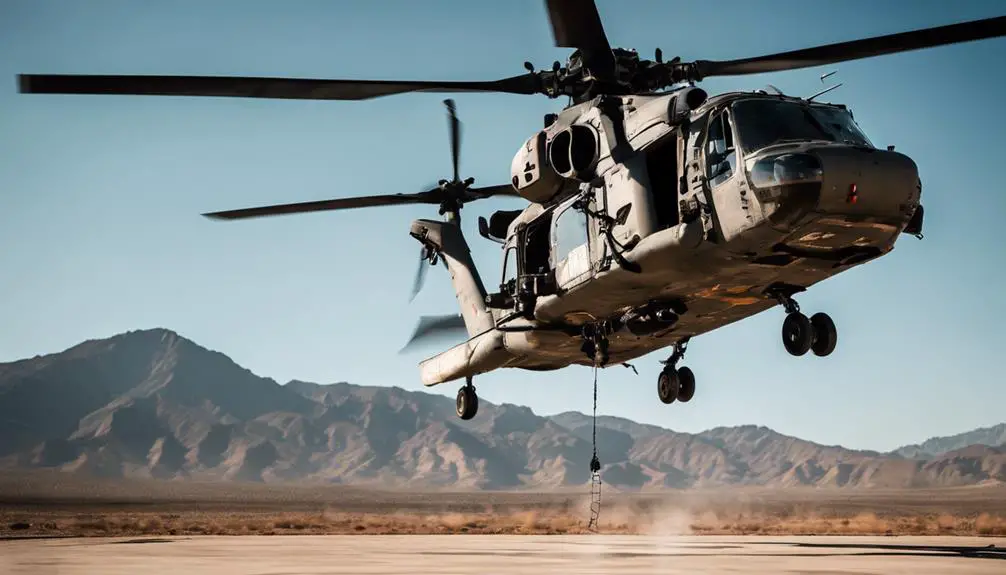
Take your place in the airlift operation, where multiple roles converge to guarantee the successful transportation of troops, equipment, and supplies. As a vital part of the team, you'll work together with other specialists to secure seamless logistical support. Your role might involve planning and coordinating the airlift mission, overseeing cargo loading, or providing tactical insertion support for special operations forces.
In this high-stakes environment, clear communication and adaptability are key. You'll need to stay focused and flexible, as mission requirements can change rapidly. Whether you're a pilot, loadmaster, or crew chief, your expertise will be critical to the success of the operation.
From transporting troops and equipment to providing humanitarian aid, the airlift operation relies on the combined efforts of its team members. As you take on your role, remember that every detail counts, from ensuring accurate cargo manifests to conducting pre-flight checks. By working together, you'll help secure the safe and efficient transportation of people and goods, making a critical difference in military operations.
Evacuating the Wounded
One of the most critical airlift operations involves evacuating wounded personnel from combat zones to medical facilities, where they can receive timely and appropriate care. As an essential part of military operations, you'll be involved in Casualty Transport, ensuring the swift and safe transportation of injured personnel to medical facilities.
Your Medevac Mission will involve flying into hostile territories, maneuvering through treacherous terrain, and landing in remote areas to retrieve wounded soldiers.
You'll work closely with medical teams to prepare the wounded for transport, stabilizing their condition and preparing them for the flight. Once airborne, you'll maintain constant communication with medical teams, providing updates on the patient's condition and receiving guidance on in-flight care.
Your chopper will be equipped with medical supplies and equipment, allowing you to provide basic life support during the flight. Your Medevac Mission will require precision, speed, and skill, as every minute counts in saving lives.
Chopper Crew Communication
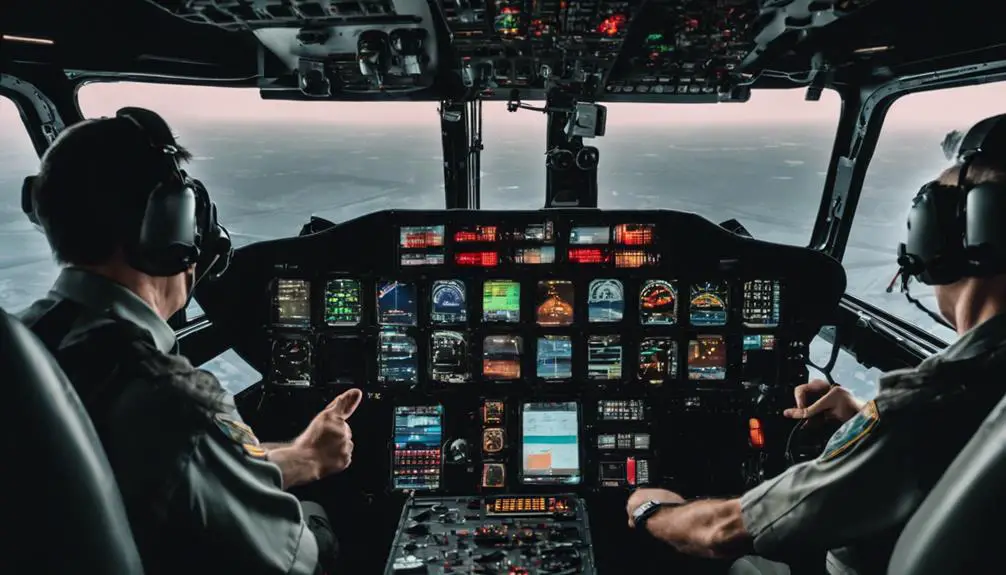
How do you guarantee seamless communication with your chopper crew, especially during high-stress Medevac Missions? Effective communication is essential to guarantee the success of the mission and the safety of the crew. As a crew member, you need to be aware of the radio protocols to follow, including using clear and concise language, avoiding jargon, and minimizing radio chatter.
| Role | Responsibility | Communication Key |
|---|---|---|
| Pilot | Directing the aircraft | Clear navigation instructions |
| Medic | Providing medical care | Vital signs updates |
| Crew Chief | Overseeing the mission | Mission status updates |
| Gunner | Ensuring security | Threat assessment reports |
In addition to radio protocols, crew dynamics play a critical role in ensuring effective communication. Building trust and respect among crew members fosters an environment where open communication can thrive. When crew members feel comfortable sharing their concerns and ideas, it leads to better decision-making and a smoother mission execution. By combining clear radio protocols with strong crew dynamics, you can guarantee seamless communication with your chopper crew, even in the most high-pressure situations.
Cultural Significance Today
You'll likely encounter the term 'chopper' in popular culture, from blockbuster movies to best-selling video games, reflecting its enduring cultural significance today. The iconic helicopter has become an integral part of our collective imagination, symbolizing rescue, heroism, and high-stakes action.
In pop culture, the chopper represents a powerful symbol of military might, often featured in dramatic rescues, intense battles, or high-octane chases. Its historical importance is undeniable, with films like 'Apocalypse Now' and 'Platoon' showcasing the chopper's vital role in military operations.
The chopper's cultural significance extends beyond the big screen. In video games, it's a common mode of transportation or combat vehicle, allowing players to experience the thrill of helicopter warfare. The term 'chopper' has also become synonymous with military operations, evoking a sense of urgency and drama.
As a cultural icon, the chopper continues to inspire and captivate audiences worldwide, ensuring its historical importance endures for generations to come.
Frequently Asked Questions
Can Choppers Be Used for Reconnaissance Missions?
You might wonder if helicopters, or 'choppers,' can be used for reconnaissance missions. The answer is yes, they can.
In fact, choppers are often employed for aerial surveillance due to their mission flexibility. They can quickly reach remote areas, hover in place, and provide real-time intel to ground troops.
With advanced sensors and cameras, choppers can gather critical information without being detected, making them a valuable asset for reconnaissance missions.
Are Chopper Pilots Trained for Water Landings?
You might think chopper pilots are just daredevils, but they're highly trained professionals. When it comes to water landings, they're prepared for the worst.
You're trained in emergency procedures, including ditching in water, and you practice nighttime training to simulate real-world scenarios. It's not just about flying, it's about surviving.
Pilots undergo rigorous training to make sure they can handle any situation, including water landings, to bring everyone home safely.
Can Choppers Carry Nuclear Weapons?
You're wondering if choppers can carry nuclear weapons.
The answer is yes, but it's rare. Some military helicopters, like the UH-60 Black Hawk, have been modified to carry a nuclear payload.
However, this isn't a standard configuration due to weaponization concerns. The risks of accidental detonation or unauthorized access are too great, making it unlikely you'll see choppers regularly carrying nuclear weapons.
Do Choppers Have Defensive Capabilities?
As you explore the capabilities of helicopters, you'll find that some choppers are equipped with defensive features.
You'll notice that certain models have armor plating to protect against small arms fire and shrapnel. Additionally, some choppers boast defensive firepower, such as mounted machine guns or missile systems, to counter threats.
These features vary by model and purpose, but they greatly enhance the chopper's ability to respond to hostile situations.
Can Civilians Ride on Military Choppers?
You're wondering if civilians can ride on military choppers. Generally, no, civilians aren't allowed on military aircraft for security and operational reasons.
Flight restrictions are in place to protect sensitive information and maintain military readiness. Civilian access is typically limited to exceptional circumstances, such as humanitarian missions or official events, and even then, it's strictly controlled.
Don't expect to hitch a ride on a military chopper anytime soon!
Conclusion
As you reflect on the role of choppers in military slang, you can't help but wonder: what would modern warfare be like without these versatile machines?
From combat zones to airlift operations, choppers have proven indispensable.
As you consider their impact, you're reminded that the bravery of chopper pilots and crew is just as vital as the aircraft themselves.
In the end, one thing is clear: choppers have earned their place as a symbol of military might and a tribute to human ingenuity.

